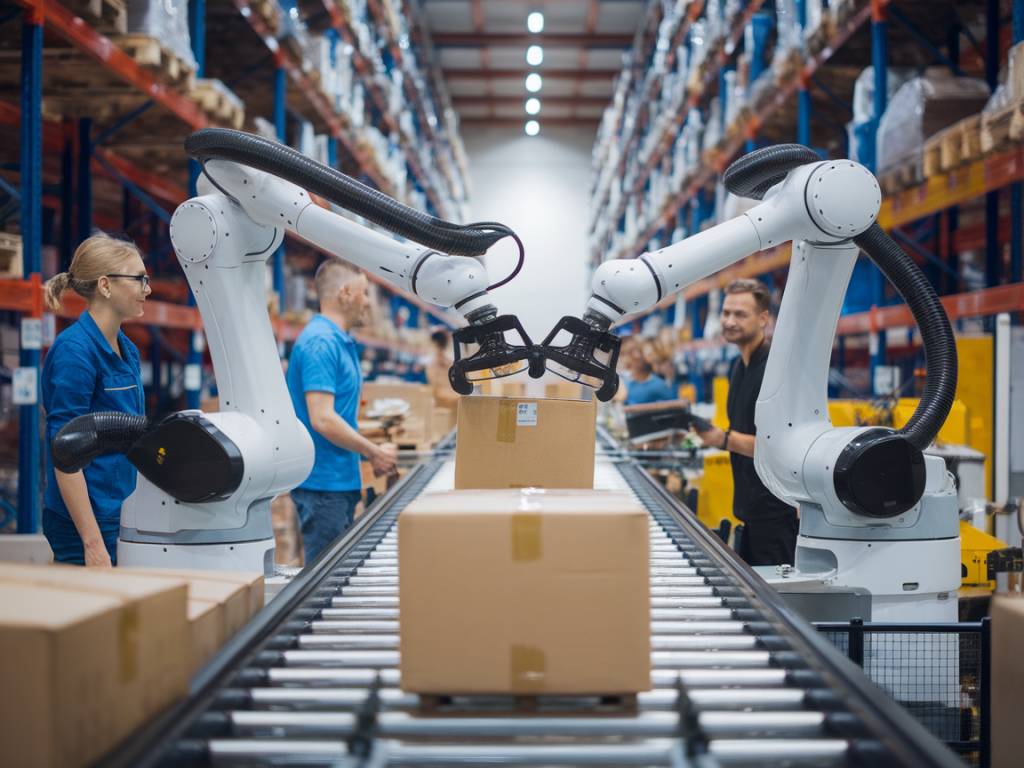Understanding the Growing Role of Warehouse Robotics
The integration of robotics into warehouses has grown exponentially in recent years. With e-commerce booming and consumer demand for quick delivery escalating, companies are increasingly relying on robotic technology to enhance their warehouse operations. As this trend continues, it is crucial to explore the challenges and benefits that accompany the implementation of robots in the warehouse setting.
The Benefits of Implementing Warehouse Robotics
One of the most compelling advantages of warehouse robotics is improved efficiency. Robots can perform repetitive, mundane tasks faster and with greater precision than human workers. This increases the speed of operations significantly, allowing businesses to fulfill orders more quickly.
An additional advantage is the reduction in labor costs. While the initial investment in robotic technology can be considerable, the long-term savings on wages and benefits can be substantial. Robots don’t necessitate breaks, vacations, or healthcare, making them a cost-effective solution for improving warehouse productivity.
Moreover, warehouse robotics can greatly enhance accuracy and reduce errors. Human error is inevitable in any manual process, but robots follow pre-programmed instructions precisely, minimizing mistakes and ensuring consistent output quality.
Safety is another significant benefit. By assigning dangerous tasks to robots, such as operating heavy machinery or transporting bulky items, businesses can reduce the risk of workplace accidents and injuries, creating a safer work environment for their employees.
Challenges in Implementing Warehouse Robotics
Despite the numerous benefits, implementing robotics in warehouses also comes with its set of challenges. One of the primary hurdles is the initial cost of investment. High-quality warehouse robots and the infrastructure needed to support them can require significant capital outlays, which can be prohibitive for smaller companies.
Another challenge is the integration of robotics with existing systems. Ensuring that new robotic processes align with current workflows and software often requires specialized expertise. This sometimes demands hiring experts or consultants, leading to further expenses and potential disruptions during the transition phase.
There can also be resistance from the workforce. Employees may fear losing their jobs to machines, creating an atmosphere of uncertainty and mistrast within the organization. Effective communication and retraining programs are essential to address these concerns and help workers transition to new roles that complement automated systems.
The Impact of Robotics on the Workforce
The introduction of warehouse robotics changes the dynamics of the workforce. While some positions may become obsolete, new opportunities arise in the form of robot maintenance and oversight roles. A well-executed robotics implementation plan should include strategies for reskilling employees, empowering them with new competencies.
By emphasizing the potential for skill development, companies can mitigate fears and build an adaptable workforce. Employees trained to operate and maintain robotic systems are invaluable assets as companies strive to achieve seamless integration between human workers and robotic counterparts.
Choosing the Right Robotics Solution
Selecting the most suitable robotic solution is a crucial step in reaping the benefits of automation. Companies must assess their specific operational needs, budget constraints, and scalability potential when considering robotics technology. It is important to choose a system that not only addresses current requirements but is also adaptable to future growth and technological advancements.
Certain providers, like warehouse robots, offer customizable solutions that can be tailored to a wide range of warehouse environments, enabling businesses to optimize their investment in robotics.
Measuring Success and ROI
To evaluate the success of warehouse robotics implementation, businesses must establish clear metrics and benchmarks. Monitoring key performance indicators such as order fulfillment times, error rates, and labor cost reductions can provide valuable insights into the impact of robots on operations.
Calculating return on investment (ROI) over a specified period can help companies determine the financial benefits derived from automation. In many cases, the initial high cost of implementing robotics is offset by significant long-term savings and operational efficiencies.
Additionally, qualitative measures, such as employee satisfaction and workplace safety improvements, should not be overlooked. The overall success of warehouse robotics may encompass both tangible and intangible benefits that contribute to building a resilient and competitive business.
The Future of Warehouse Robotics
The adoption of warehouse robotics is expected to continue growing as technology advances and becomes more accessible. Innovations in artificial intelligence, machine learning, and sensor technology promise to further enhance robotic capabilities, leading to even greater efficiency and adaptability in warehouse operations.
Future warehouses may feature increased collaboration between humans and robots, leveraging the strengths of both to create optimized systems. By investing in continued research and development, companies can remain at the forefront of this revolution, ensuring they are well-equipped to meet the evolving demands of the market.
The continual rise of warehouse robotics presents an exciting yet challenging opportunity for businesses. By navigating the complexities and embracing the advantages of automation, companies can transform their operations, achieving unprecedented levels of productivity and profitability.
